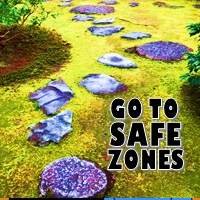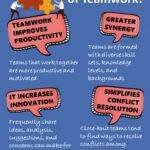
The Game of Go To Safe Zones
Go To Safe Zones is a dynamic group initiative to focus on collaboration and build mutual trust and support.
In advance, randomly distribute dozens of rubber poly spots or foot-print sized blocks of wood between two lines spaced about 10-15 metres apart. Place many blocks of wood close enough so that people can step from one to another.
The further apart they are, the more difficult the challenge will be. There needs to be at least one obvious, realistic path between the two zones.
When ready, ask your group to gather on one side of the zones, possibly behind a line. Establish this as one of the two safe zones, and announce that you want the group to traverse to the other safe zone.
Challenge your group to traverse the area between the two lines by stepping only on the blocks of wood. If a person happens to touch the area outside of the blocks of wood, invite them to restart.
When ready, ramp up the challenge and ask two people to cross together while physically connected to one another in some manner. The challenge is identical – traverse the area safely without touching the ‘no-go’ zone. Again, if someone touches the ‘no-go’ zone, invite the pair to restart.
Finally, form small teams of 4 to 6 people. Challenge these teams to cross the area together while keeping constant physical contact.
Beware of the tendency for some rungs to slip when weight is shifted on them. In addition to the obvious security issues involved, wooden blocks should ideally remain in situ at all times.
Moment of Reflection
- What did you notice during this experience?
- In what ways did you offer, or were you offered support during the traverse?
- What does collaboration mean? What does trust mean? Are these attributes related?
- Why is it important for a team to practice these attributes?
The topics of this publication: teamwork, trust, integration, strategy, collaboration, cooperation, interactions, adaptability skills, adaptation, foster relationships


